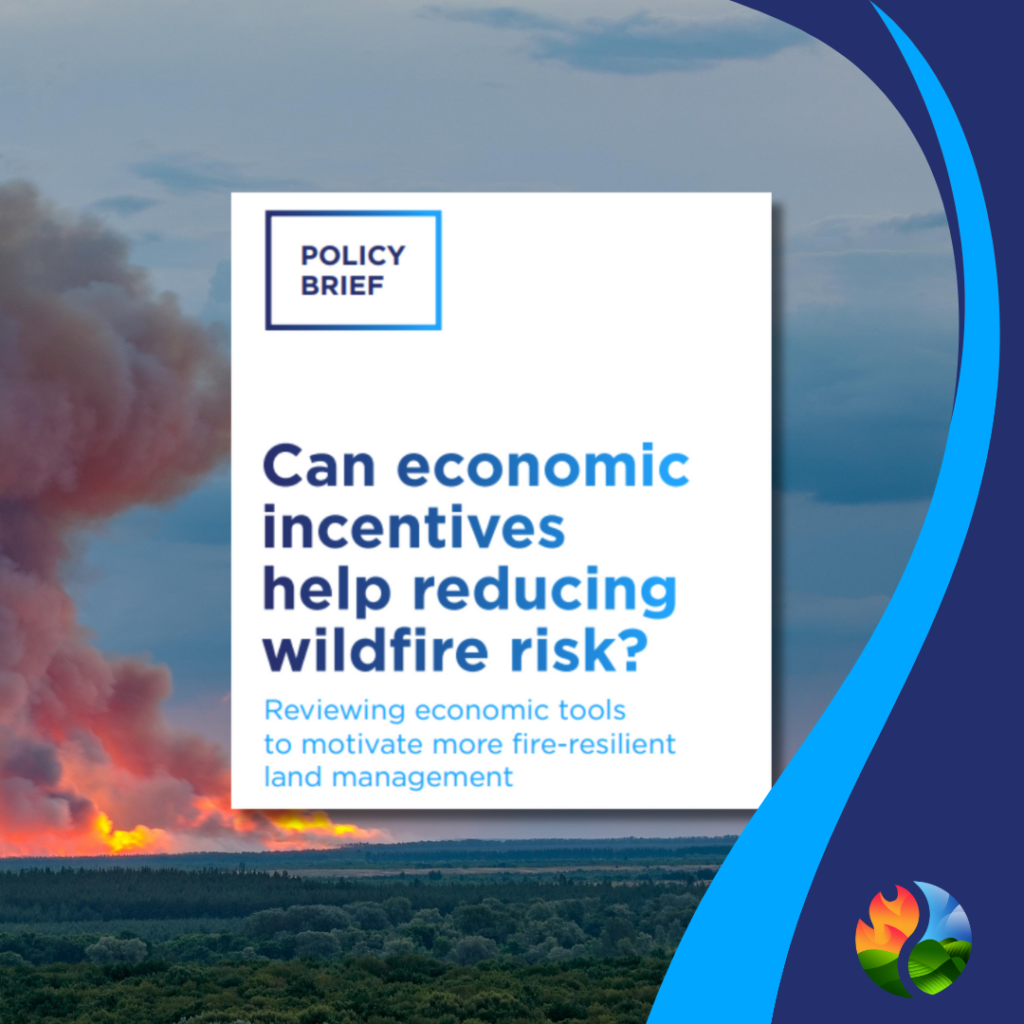
FIRE-RES publishes the policy brief “Can economic incentives help reducing wildfire risk? Reviewing tools to motivate more fire-resilient land management“. Written by the European Forest Institute (EFI) and the Forest Science and Technology Center of Catalonia (CTFC), this policy brief analyses the effectiveness of economic incentives in reducing wildfire risk.
The key messages emerging from the policy brief may be of interest not only to those designing these instruments – notably policy makers and private actors such as insurers – but also to the potential beneficiaries of the incentive measures, such as foresters, farmers, rural development organisations and citizens living in fire-prone areas.
why use economic instruments in fire risk reduction?
Fire risk prevention and mitigation involves a wide range of potential stakeholders, from landowners and farmers to shepherds, citizens, communities, and businesses. Economic instruments can be used to enhance their motivation to do more to reduce fire risk. These include incentive mechanisms, such as subsidies or payments, or disincentives, such as fines.
which economic instruments are likely to trigger action?
The policy brief explores the different mechanisms being tested in Europe and beyond, drawing on 76 case studies, with a focus on positive incentives. It provides readers with an introduction to the different mechanisms:
- Subsidies, such as support from the CAP’s Rural Development Programmes.
- Payments for environmental services, which, unlike subsidies, are conditional and based on the delivery of specific actions or services. Such schemes may be agreed between local authorities and farmers, for example, for services such as grazing firebreak areas.
- Labels for specific value chains, such as timber or certain food products, that promote their contribution to forest management in fire-risk areas.
- Risk insurance premiums that offer discounts to policyholders who have implemented risk-reducing practices (such as brush-cutting).
- Liability fees, a disincentive including penalties for non-compliance with legal obligations.
- Bonds, which have some similarities to payments for environmental services, but instead remunerate land managers prior to action.
- Corporate social responsibility mechanisms, which encourage companies to support and donate to organisations active in fire risk reduction.
4 key messages for the implementation of economic incentives
1: Various economic incentive instruments are already available: public funding remains the main instrument used to encourage stakeholders to take action in favour of fire risk reduction. Public funding is used in most of the cases studied, including payments for environmental services, which are growing and still evolving. However, the case studies show that there is a wide range of possible measures.
2: It is crucial to tailor policies to each context: land ownership and management organisation, risk culture from one country to another, society’s perception of forest fires, and the political and cultural tradition of fire risk management are all factors of variability that need to be considered when designing policies and economic incentives.
3: The impact of economic incentives can still be enhanced: from the zoning of the areas affected by the measures to the involvement of forest owners or the individual vs. collective dimension, some elements can be further explored to ensure better effectiveness of the incentives.
4: Incentive-based policies can be improved: Incentive-based policies can be improved by taking into account the need for both time for implementation and data for impact assessment. They can also be made more efficient by, among others, exploring a mix of public and private funding and by involving the appropriate local intermediaries.
Find out more about each of these tools, discover concrete examples of implementation and get inspired by the key messages by reading the policy brief “Can economic incentives help reducing wildfire risk? Reviewing tools to motivate more fire-resilient land management”.
You can also find all FIRE-RES deliverables in our library!